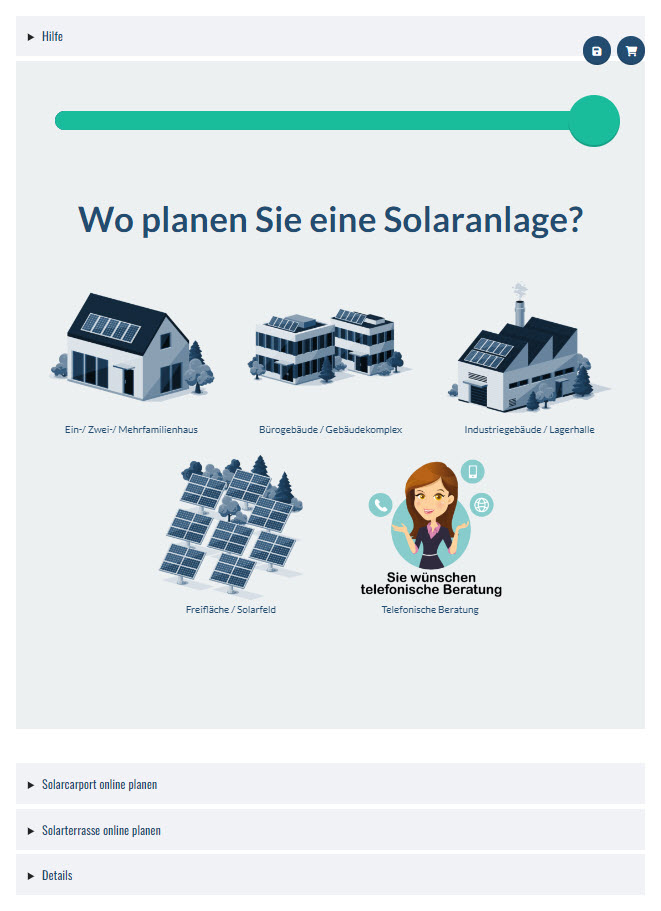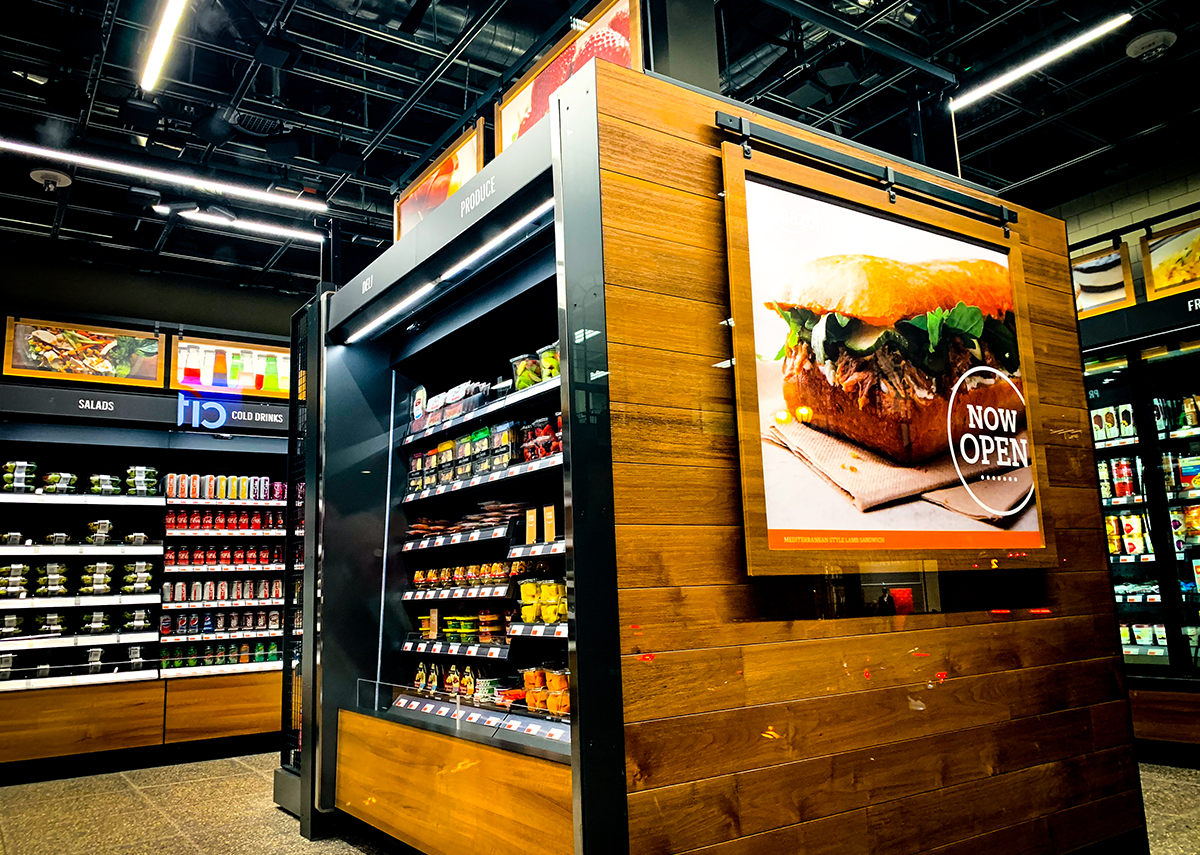New shopping: The Grab & Go concept (Just Walk Out Shops / Walk-In Store / Pick & Go Shop)
Language selection 📢
Published on: November 3, 2023 / update from: November 29, 2024 - Author: Konrad Wolfenstein
🍔 The Grab & Go concept 📊
The grave & go concept, also known as “grave-and-go”, has its roots in the development of fast and comfortable meal solutions for people. Here is a short history of the concept:
🪙 Slot machines of the past
The concept is somewhat similar to the earlier slot machines that were popular in the United States and other countries in the early 20th centuries. Customers could insert coins into machines and then pick up a prepared meal or snack, similar to today's Grab & Go, although less diverse and modern.
🍴 Cafeteria-like facilities
A forerunner of the grave & Go was the so-called “machine”, which was built like a cafeteria restaurant. Customers were able to throw in their coins and then use a buffet of prepared dishes before taking their selection.
☕🥐 Modern developments
Over the past few decades, the Grab & Go concept has evolved and become a popular option in cafes, bakeries, grocery stores and even airports and train stations. It offers convenient, pre-prepared and packaged meals and snacks for people who don't have time for a traditional meal or are on the go.
🌍 Practical solution, modern lifestyle
The Grab & Go concept has become a convenient solution for modern lifestyles, offering a wide range of options for people in need of a quick meal.
Suitable for:
- Autonomous Retail Systems – Autonomous systems for large supermarkets and retail (Smart & Walk-In Stores)
- Smart shopping business models: 30 innovative ideas and variants that have emerged around the new shopping in recent years
📣 Similar topics
- 🥪 The evolution of the Grab & Go concept: From vending machines to today
- 🇺🇸 Old food vending machines: The forerunners of modern Grab & Go
- 🍔 Grab & Go: The convenient dining solution for modern people
- 🥗 History of Fast Food: From Cafeterias to Grab & Go
- 🚆 Grab & Go: The favorite for travelers at airports and train stations
- 🍱 The Age of Pre-Made Meals: The Advent of the Grab & Go
- 🏢 The transformation of grocery stores through the Grab & Go concept
- 🕰 From coin-operated machines to modern Grab & Go: A culinary journey
- 🍜 Why Grab & Go is the ideal concept for today's hectic life
- 🥤 Fast, convenient, delicious: The popularity of Grab & Go over time
#️⃣ Hashtags: #GrabAndGo #FastMeals #HistoryDesFastEssens #ModernFoodSolutions #EvolutionDesEssens
Smart Stores 24/7: Walk in and Pick & Go or Just Walk Out Shops – Autonomous Systems for Retail (ARS) | Metaverse & 2D Codes
A “Walk In Shop” generally simply refers to a physical retail store that customers can walk into to purchase products. This is the traditional retail approach where customers physically select their purchases and in the context of the Smart Store, payment is made via a smartphone app after the pick & scan process. The cashier or going to the checkout is therefore no longer necessary.
More about it here:
🌆 From City Life to Fast Food: The Evolution of the 'Grab & Go' Concept 🍔
🌍 The “Grab & Go” concept, i.e. the principle of fast self-service, has its origins in the increasing acceleration of the lifestyle, especially in urban centers. It developed in response to the growing demand for fast, convenient and often healthy food for people. This concept was taken up and adapted by various fast food chains and convenience stores in different countries around the world.
🔍 In the specific sense, it is difficult to say where exactly the “Grab & Go” concept started, since many cultures and countries have developed forms of quick catering independently of one another. However, one could locate the emergence of modern concept in the United States of the post -war period, where the expansion of the suburbs, the increase in professionals and the development of car culture led to an increase in demand for quick meal opportunities.
🍱 In the 1980s and 1990s, the concept spread internationally and was further developed to meet different cultural preferences and eating habits. Over time, more sustainable and healthier options were integrated into the “Grab & Go” offer to address a broader customer.
Suitable for:
📣 Similar topics
- The evolution of the “Grab & Go” concept 🍔🥤
- Urban lifestyle and the emergence of “Grab & Go” 🌆🥡
- The role of fast food chains in the “Grab & Go” movement 🍟🏢
- Fast self -service: How “Grab & Go” conquered the world 🌍🏃♂️
- “Grab & Go”: An answer to modern, hectic life ⏰🍎
- The influence of car culture on quick food solutions 🚗🍕
- From the USA to Global: The spread of “Grab & Go” 🇺🇸🌎
- Adaptation of “Grab & Go” to different cultural preferences 🌐🍱
- Health and sustainability in the “Grab & Go” industry 🥗🌱
- From fast food to the healthy “grave & go”: a paradigm shift 🔄🥙
#️⃣ Hashtags: #GrabAndGo #FastFood #UrbanLifestyle #FastFoodEvolution #HealthyOptions
Smart Shops 24/7 & Stores 365: Closing supply gaps with Grab & Go technology, vending machines (regiomats) and checkout self-checkout systems
The introduction of Smart Stores 24/7 in Germany began in 2020 and has experienced rapid development since then. These innovative business concepts have revolutionized the traditional shopping experience and offer customers a completely new way of shopping. With their fully automated operation and ability to be accessible 24/7, Smart Stores have created high consumer appeal.
More about it here:
🌟 Creation of the Grab & Go concept
The Grab & Go concept cannot be traced back to a specific source or country. Rather, it developed in response to the growing demand for convenience and speed in food consumption. The origins of the concept can be seen in different forms and in different cultures around the world where quick and convenient food solutions were needed.
🌍 Influencing factors
Some factors that contributed to the emergence and popularization of the Grab & Go concept could be:
urbanization
With the increase in population in urban areas and the fast-paced lifestyle, the need for quick food options arose.
Acceleration of everyday life
The modern, hectic lifestyle, where people have less time for traditional meals, has led to the demand for quick yet quality food.
Increase in professional activity
In particular, the increasing number of working people traveling or eating in the office has led to a demand for convenient meals that can be easily transported and consumed quickly.
Convenience culture
Of course, in countries like the US, where convenience stores have a long history, the concept has evolved to meet the demand for readily available food.
Innovation in packaging
Advances in packaging technology have made it easier to keep food fresh while making it suitable for on-the-go consumption.
Health and environmental awareness
While Grab & Go may not have initially focused on healthy options, the concept has adapted to the growing demand for healthier, more sustainable food.
🛒 Distribution locations
So the concept did not spread linearly from one point in the world, but rather developed in response to global changes in society. Nowadays, Grab & Go products can be found not only in specialized shops or convenience stores, but also in supermarkets, gas stations, airports and even in the form of vending machines in public facilities.
🚀 Technological progress
With the introduction of self-service checkouts and later smart technologies such as RFID chips and mobile payment systems, Grab & Go offers became even more accessible and faster for consumers.
👥 The social element
In an increasingly connected world in which social media plays a major role, food is often seen as a social statement. Quick and convenient meals that are also visually appealing fulfill the desire to participate in trends and share one's own lifestyle.
🌮 Cultural influences
Cultural influences have also contributed to the diversification of the range of Grab & Go products. In addition to classic sandwiches, you can also find sushi boxes or burrito-like wraps that represent different ethnic cuisines.
🚀 Future prospects
The Grab & Go concept thus reflects the dynamics of modern society, in which flexibility, time savings and individual needs play a central role. It is expected that the concept will continue to evolve and adapt to new challenges, whether by introducing innovative products, improving sustainability or applying new technologies to further optimize the customer experience.
📣 Similar topics
- The Evolution of Grab & Go: A Global Perspective 🌎
- Grab & Go: An answer to the modern lifestyle ⏩
- Convenience and speed: The driving forces behind Grab & Go 🚀
- From convenience stores to supermarkets: The spread of Grab & Go 🛒
- Packaging technology and freshness: The role of packaging in Grab & Go 📦
- Health awareness and sustainability: The development of Grab & Go 🌱
- Technological Advances and Grab & Go: The Future of Quick Eating 📲
- Food as a social statement: Grab & Go in the era of social media 👥
- Cultural diversity in the Grab & Go offer 🌮🍣
- The future of Grab & Go: Innovations and challenges 🚀🔮
#️⃣ Hashtags: #GrabAndGo #FastFood #ConvenienceCulture #Sustainability #Innovations
🏪 The development of the Grab & Go concept 🛒
🛍️🚶♂️ The Grab & Go concept has evolved over time and been picked up and adapted by various retailers and companies, including Amazon, to meet the needs of people on the go. It is an example of advancing digitalization and automation in retail to make the shopping experience more convenient.
1. Early precursors
The concept is similar to the early vending machines and cafeteria-like facilities that existed as early as the early 20th century. Customers could insert coins into machines and select prepared foods or snacks, similar to today's Grab & Go, albeit in a simpler form.
2. Amazon Go
Amazon introduced the concept of the cashless supermarkets, known as “Amazon Go”, in 2016. The first Amazon Go Store was opened in Seattle. This innovative concept enables customers to take products from the shelves and leave the shop without having to queue at the cash register.
🌍 Convenience culture
The term “convenience culture” describes a lifestyle that puts comfort and speed in the foreground. This trend has its origins in the increasingly hectic and time -optimized lifestyle of many people, especially in urban areas. The term “convenience” comes from English and means something like convenience or comfort.
🍔 Everyday aspects of convenience
In everyday life, convenience culture is expressed through various aspects:
Food and Drink
Ready-made meals, quick-service restaurants and delivery services are gaining popularity because they save time and are easily accessible.
technology
Apps that simplify everyday life, such as online banking, shopping apps or ticket machines.
Services
Offering services aimed at saving time, such as dry cleaning services, 24-hour laundromats or quick car washes.
🏪 Convenience stores
Convenience stores are small retail stores that offer a wide range of everyday essentials such as groceries, magazines, tobacco products and often fast food. They usually have longer opening hours than normal supermarkets, some are even open around the clock. Convenience stores are designed so that customers can shop quickly and easily. They are often located in central locations or at gas stations in order to be as easily accessible as possible for customers.
💸 Price and meaning
In convenience stores you often pay a slightly higher price compared to supermarkets, which is justified by the convenience of quick shopping and the longer opening hours. These stores play an important role in convenience culture because they fulfill the desire for immediate satisfaction of needs.
🇰🇷🛍️ Example: Well-known convenience stores in South Korea 🏬🌆
7-Eleven
The internationally operating convenience store chain 7-Eleven from Japan is represented on the market in South Korea with over 7,000 locations.
Mini stop
Ministop is a Japanese convenience store (franchise) chain founded in 1980. In contrast to other chains of this type, Ministop offers an integrated kitchen in which sandwiches and snacks are prepared. Guests have the opportunity to eat on site. Ministop opened its first branch in South Korea in 1990. Today the company has 1,601 branches across the country.
🌆 Smart Cities 🏙️ – The solution for mega-urbanization? 🌍🔍
The size of cities around the world is constantly increasing, fueled by the many millions of people who flow from the countryside into urban centers every year. But increasing urbanization is leading to growing demands on governments, companies and city administrations to manage the growing demand for goods and infrastructure in the centers. One solution is smart cities, which are paved by increasing global digitalization, automation and networking. But what are the trends and drivers of intelligent cities? Asia and especially Japan show where the future could lead in Europe.
More about it here:

Xpert.Plus warehouse optimization - high-bay warehouses such as pallet warehouses consulting and planning
Plan your solar system for the most common applications conveniently online with our solar system planner!
With our user-friendly solar system planner you can plan your individual solar system online. Whether you need a solar system for your home, your business or for agricultural purposes, our planner offers you the opportunity to take your specific requirements into account and develop a tailor-made solution.
The planning process is simple and intuitive. You simply enter relevant information. Our planner takes this information into account and creates a tailor-made solar system that meets your needs. You can try out different options and configurations to find the optimal solar system for your application.
Additionally, you can save your plan to review later or share with others. Our customer service team is also available to answer your questions and provide support to ensure your solar system is optimally planned.
Use our solar system planner to plan your individual solar system for the most common applications and advance the transition to clean energy. Start now and take an important step towards sustainability and energy independence!

The solar system planner for the most common applications: Plan the solar system online here - Image: Xpert.Digital
More about it here:
We are there for you - advice - planning - implementation - project management
☑️ Smart City & Factory: Industry expert for energetic 5G buildings and halls as well as advice and installation of solar systems
☑️ Xpert.Plus - logistics consulting and logistics optimization
☑️ Industry expert, here with his own Xpert.Digital Industry Hub with over 2,500 specialist articles
I would be happy to serve as your personal advisor.
You can contact me by filling out the contact form below or simply call me on +49 89 89 674 804 (Munich) .
I'm looking forward to our joint project.
Xpert.Digital - Konrad Wolfenstein
Xpert.Digital is a hub for industry with a focus on digitalization, mechanical engineering, logistics/intralogistics and photovoltaics.
With our 360° business development solution, we support well-known companies from new business to after sales.
Market intelligence, smarketing, marketing automation, content development, PR, mail campaigns, personalized social media and lead nurturing are part of our digital tools.
You can find out more at: www.xpert.digital - www.xpert.solar - www.xpert.plus




























